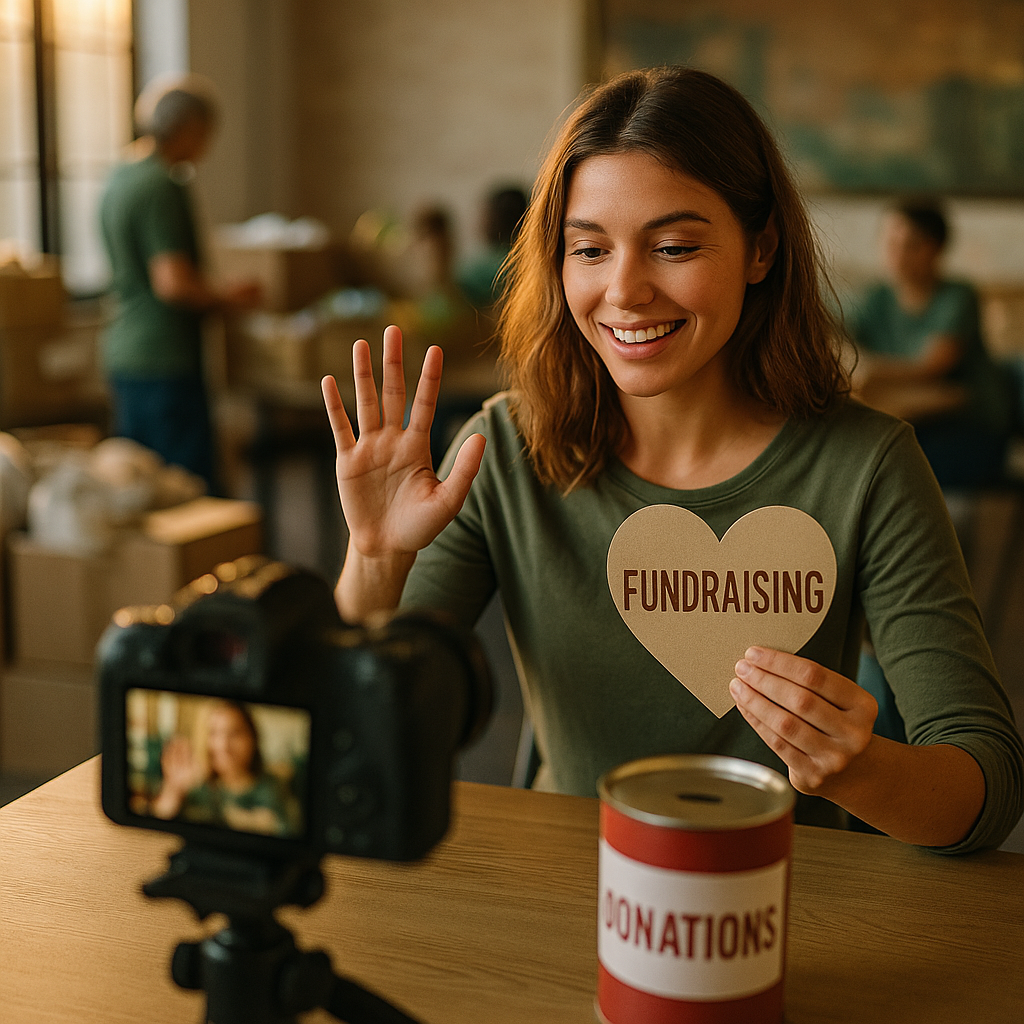In this case study, discover how a non-profit harnessed micro-influencers for a fundraising blitz that exceeded expectations. Using strategic partnerships, authentic storytelling, and data-driven targeting, the non-profit transformed its donor base and outreach. Curious about what made this campaign a standout success and how it can work for your organization? Read on for key insights and actionable tips.
Leveraging Micro-Influencers for Authentic Non-Profit Outreach
Micro-influencers, individuals with 1,000–50,000 followers, are gaining popularity in non-profit fundraising campaigns due to their highly engaged communities and trusted voices. This non-profit focused on leveraging micro-influencer partnerships to amplify their impact, targeting influencers who were already aligned with their mission of supporting at-risk youth in urban communities.
The selection criteria emphasized authenticity and niche focus rather than follower count alone. Influencers were chosen for their history of engaging audiences with cause-related content and their personal investment in youth development. This ensured campaign messages resonated genuinely and organically, reinforcing the trust that’s essential in non-profit communications.
Building a Strategic Fundraising Campaign with Influencer Marketing
Effective influencer marketing for non-profits requires more than just outreach. The team designed a comprehensive fundraising blitz tailored around Giving Tuesday 2025. The campaign included:
- Personalized messaging kits for influencers, including story templates, images, and up-to-date fundraising stats.
- Dedicated landing pages for each influencer to track engagement and donations generated from their audience.
- Real-time campaign dashboards, providing influencers with impact updates to share with their followers.
This strategic approach allowed for unified messaging and streamlined donation tracking. Influencers felt empowered by direct involvement and could transparently report campaign progress to their communities, reinforcing trust and encouraging further engagement.
Data-Driven Targeting: Choosing and Supporting the Right Micro-Influencers
The non-profit used a combination of social listening tools and influencer discovery platforms. By analyzing previous campaign performance and tracking audience engagement data, the team selected micro-influencers who had high engagement rates and a demonstrated history of supporting similar causes.
Support went beyond initial outreach. Influencers received regular updates, custom graphics, and prompt answers to questions. Weekly calls allowed them to share feedback, resulting in message adjustments that resonated better with followers. This two-way partnership was pivotal for campaign agility and impact.
Compelling Content Creation: Emotional Storytelling that Converts
Beyond choosing the right partners, the campaign’s success hinged on expert storytelling. Influencers shared personal stories highlighting the non-profit’s mission and real-life testimonials from beneficiaries. This content was delivered across multiple platforms—Instagram, TikTok, and YouTube—tailored for each audience.
- Short-form videos: Captured emotional testimonials in under 60 seconds for TikTok and Instagram Reels.
- Live Q&A sessions: Influencers hosted discussions with non-profit leaders and program participants, building transparency.
- Impact infographics: Data visualizations showed how donations directly benefited recipients.
This multi-channel approach elevated visibility while creating several touchpoints for donors. Each story encouraged concrete action—whether small monthly contributions or one-time gifts—driven by a clear call to donate and share.
Measuring Impact: Results and Lessons from the Fundraising Blitz
The campaign ran for one week, with influencers rallying support in a concentrated timeframe. The results were significant:
- 28% increase in total fundraising compared to previous campaigns.
- 45% of donations came directly from micro-influencer audience referrals.
- Increase in volunteer signups and long-term donor engagement.
Post-campaign surveys revealed that donors trusted the campaign due to influencers’ transparent updates and firsthand testimonials, which outperformed standard ads or celebrity endorsements. The agile feedback process also allowed for real-time tweaks, proving invaluable.
The team learned that micro-influencers are not just amplifiers: they are collaborators. Offering genuine support, feedback loops, and detailed impact reporting are essential for non-profit influencer success in 2025.
Actionable Takeaways for Your Non-Profit’s Next Micro-Influencer Campaign
Ready to apply these insights to your organization? Here are key steps for running an agile, effective fundraising blitz with micro-influencers:
- Define your goals: Outline what success looks like (donations, signups, or awareness).
- Select for alignment and engagement: Choose micro-influencers connected to your cause and community.
- Support and equip your partners: Deliver branded content and regular updates, and answer questions promptly.
- Empower storytelling: Focus on real beneficiaries and transparent impact.
- Measure and iterate: Use live dashboards for real-time analytics and campaign agility.
Incorporate these tested best practices—and remember that success hinges on authentic relationships, clear communication, and data-driven decisions.
FAQs: Micro-Influencers and Non-Profit Fundraising Campaigns
- Why should a non-profit use micro-influencers instead of traditional influencers?
Micro-influencers have deeper, more trusted relationships within niche communities. Their advocacy feels more authentic, leading to higher engagement and conversion rates, especially for mission-driven campaigns.
- How do you find the right micro-influencers for a non-profit campaign?
Use influencer discovery platforms, monitor engagement rates, and prioritize individuals already invested in your cause. Search for those who create cause-oriented content and show positive interactions with followers.
- What platforms are most effective for non-profit influencer marketing in 2025?
Instagram, TikTok, and YouTube remain highly effective for storytelling and outreach. Choose platforms based on your target donor demographics and where your audiences are most active.
- How can micro-influencers drive genuine donor action?
Empower micro-influencers with real stories and regular impact updates, and let them communicate in their own voice. Their authentic endorsement encourages donations, engagement, and sharing in their community.
- What metrics should organizations track in a fundraising blitz with micro-influencers?
Monitor referral traffic, conversion rates, donation amounts, engagement rates on influencer content, and long-term donor retention post-campaign to assess overall impact.
By harnessing the authenticity and reach of micro-influencers, this non-profit’s fundraising blitz set a new standard in community engagement and donor recruitment. The key takeaway: Small voices can create big change, provided they’re supported, aligned, and empowered with the right tools and stories.
